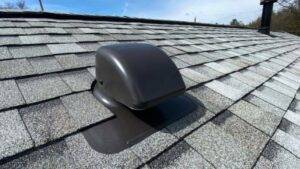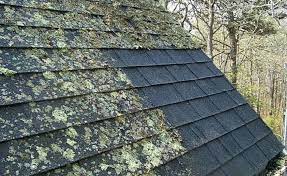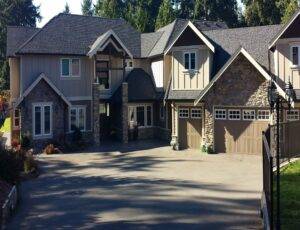Roofing trends have come a long way, and with the ever-evolving technology and growing environmental concerns, homeowners and builders are constantly looking for innovative and sustainable solutions. We will explore fascinating roofing trends that are shaping the industry while offering improved durability, aesthetics, and functionality. So buckle up and get ready to discover what are the latest roofing trends in solar power advancements, sustainable solutions, innovative materials, and more!
Short Summary
- Solar power advancements, solar panel integration and photovoltaic shingles are popular roofing trends in 2023.
- Sustainable roofing solutions include green roofs, cool roofs and eco-friendly materials.
- Innovative materials such as metal roofs, synthetic roofings and mixed material options offer enhanced performance & aesthetics. Flat & skillion designs provide cost effectiveness. Technological innovations enable drone inspections & smart systems while bold colors create contrast effects.
Solar Power Advancements
The push for renewable energy and energy efficiency has led to significant advancements in solar roofing systems, making them increasingly popular in recent years. Solar panel integration and photovoltaic shingles are at the forefront of these developments, offering homeowners the opportunity to reduce energy costs and improve air quality while contributing to the fight against climate change.
These systems are becoming more affordable and efficient, making them a viable option for many homeowners. Installation.
Solar Panel Integration
As homeowners become more environmentally conscious, the trend of integrating solar panels into traditional roofing materials is gaining momentum. Solar panel roofing offers an array of benefits, including generating clean electricity, reducing reliance on fossil fuels, and decreasing greenhouse gas emissions.
Moreover, solar panels provide:
- Cost savings
- A positive environmental impact
- Easy installation
- Improved pest protection
- Convenient setup
- Enhanced roof protection
- Attractive aesthetics
- A single warranty for both the roof and solar system
- Increased energy efficiency
- The generation of renewable energy.
Photovoltaic Shingles
For those who prefer a more aesthetically pleasing alternative to traditional solar panels, photovoltaic shingles are the answer. These innovative shingles seamlessly blend with traditional asphalt shingles while generating electricity from sunlight. Composed of photovoltaic cells, they facilitate the conversion of sunlight into electricity, offering homeowners the opportunity to benefit from solar energy without compromising the appearance of their home.
The installation of photovoltaic shingles is relatively simple and can be completed in minutes.
Sustainable Roofing Solutions
Green roofs, cool roofs, and eco-friendly materials are gaining popularity as sustainable roofing solutions. These environmentally-friendly options are designed to reduce waste, lower environmental impact, and often have energy-saving features.
In this section, we will examine each of these solutions in more detail, discussing their benefits and applications.
Green Roofs
Green roofs, also known as living roofs or green roof systems, provide a unique and energy-efficient roofing solution that can help reduce the urban heat island effect. They are designed with vegetation that lowers the roof’s temperature and absorbs heat from the surrounding air, leading to notable energy savings.
While not widely used in residential homes, green roofs offer the potential to enhance air quality, provide insulation, and regulate stormwater.
Cool Roofs
Cool roofs are designed to:
- Reflect sunlight
- Absorb less heat
- Offer additional energy efficiency
- Contribute to increased structural stability in the face of climate change
Utilizing materials such as slate and clay, cool roofs provide a light-colored reflective surface that helps to decrease heat absorption.
This reflection of radiant heat can reduce the workload of a home’s HVAC system, potentially leading to lower electricity bills during the summer.
Eco-Friendly Materials
For homeowners looking to take a greener approach to construction, recycled and sustainable materials are becoming increasingly popular in the roofing industry. Some eco-friendly materials for roofing include:
- Recycled products
- Wood
- Clay
- Slate
These materials offer durability, energy efficiency, and the potential to reduce the environmental impact of construction.
However, it is important to consider the potential increased cost and installation challenges when opting for eco-friendly roofing materials.
Innovative Roofing Materials
New and emerging roofing materials are transforming the roofing business, offering improved durability, aesthetics, and functionality. Among these innovative options, the most popular roofing material includes metal roofs and synthetic roofing materials, which are changing the way we think about roofing.
In this section, we will delve into the benefits and applications of these cutting-edge materials.
Metal Roofs
Metal roofing has come a long way from its industrial roots, now available in a wide range of styles and colors to suit any residential home. Metal roofing has become increasingly popular, owing to its strength, ease of care and energy-saving characteristics. It is a great option for long-term value and worry-free performance.
Modern metal roofing materials, including metal roof options, are constructed with corrosion-resistant alloys, designed to last for extended periods while reducing noise and offering a variety of attractive styles and colors.
Synthetic Roofing Materials
In the quest for lightweight and durable roofing options, synthetic roofing materials are gaining traction. Made from rubber, plastic polymers, or fiberglass, these materials offer several advantages, including:
- Durability
- Cost-effectiveness
- Environmental friendliness
- Customizability
- Ease of installation
Synthetic materials are also extending the range of raw materials used for roofing, offering a greater selection of options to homeowners.
Mixed Material Roofs
Combining two or more roofing materials for enhanced protection and aesthetic appeal is a growing trend in the roofing industry. Mixed material roofs provide a range of advantages, including:
- Enhanced aesthetics
- Cost-effectiveness
- A variety of options
- Environmental benefits
- Superior performance and durability
- Low maintenance
However, it is important to consider the potential increased cost and specialized knowledge required for installation when choosing a mixed material roof.
Flat and Skillion Roof Designs
Flat and skillion roofs are experiencing a surge in popularity in modern residential architecture, offering unique design possibilities and functional benefits. In this section, we will explore the advantages and applications of both flat and skillion roofs, examining the reasons behind their rising popularity.
Flat roofs are often chosen for their low cost and ease of installation. They are also very popular.
Flat Roofs
Flat roofs offer numerous advantages, including:
- Customization opportunities
- Contemporary design appeal
- Simple construction that allows for a variety of materials, colors, and textures to be used
- Unique and modern aesthetic that is gaining popularity among homeowners.
Flat roofs also provide a range of functional benefits, such as durability, cost-effectiveness, and architectural appeal.
Skillion Roofs
Skillion roofs, also known as shed-style roofs, are characterized by angular lines and steep slopes that converge at the center in an asymmetrical manner. These roofs offer increased durability, cost-efficiencies in construction, and a modern, minimalistic aesthetic.
Skillion roofs are an aesthetically pleasing roofing style that can be cost-efficient, easy to install, and have a longer lifespan than other styles, making them an attractive option for modern home design.
Technological Innovations in Roofing
The impact of technology on the roofing industry cannot be understated, with drone inspections and smart roof systems revolutionizing the way we approach roofing projects. In this section, we will explore the benefits and potential applications of these advanced technologies, shedding light on the future of the roofing industry.
Drones can be used to inspect roofs quickly and accurately, providing detailed images and data that can be used to inspect roofs.
Drone Roof Inspections
Drones are revolutionizing the way roof inspections are conducted, providing visual data, thermal imaging, and 3D modeling for early issue detection. By capturing comprehensive data, drones make roof inspections easier, safer, and more efficient. This allows for more accurate assessments and maintenance of roofs.
Smart Roofs
The integration of technology into roofing systems, such as smart roofs, is providing improved features such as:
- Energy efficiency
- Moisture sensing
- Built-in LED lighting
- Weather monitoring
Smart roofs incorporate sensors, controllers, and other devices to monitor and control roof conditions, energy efficiency, light control, rain protection, and integration with other control systems.
These advanced roofing systems offer a range of advantages, including:
- The ability to monitor and regulate roof conditions
- Improved energy efficiency
- Light control
- Rain protection
- Integration with other control systems
Bold Colors and Contrasting Styles
High contrast colors and cool hues are making a splash in the world of roofing design, with homeowners opting for striking color combinations that create a unique visual impact and reduce heat absorption. These roofing trends are gaining popularity and transforming the aesthetics of residential properties.
In this section, we will delve into this trend, discussing the benefits and applications of these bold color choices.
High Contrast Colors
Homeowners are increasingly using contrasting roof colors to create a distinct visual effect and differentiate their home from others. By combining two or more colors, such as black and white or gray and white, they create an eye-catching look that reduces heat absorption by reflecting more of the sun’s rays away from the home. This helps to keep the home cooler in the summer and can even reduce energy costs.
In the end, there was no argument.
Cool Hues
In modern roofing design, cool colors like black, bronze, gray, and silver are becoming increasingly popular. These hues create a tranquil and peaceful atmosphere while imparting a sense of dependability and stability, making them a popular choice in interior design and other creative applications.
The use of cool hues also offers a refreshing and revitalizing feeling, further contributing to their popularity in contemporary roofing design.
Summary
In conclusion, the world of roofing is constantly evolving, with new materials, designs, and technologies reshaping the industry. From solar power advancements and sustainable solutions to innovative materials and bold colors, homeowners and builders now have an exciting array of options to choose from. As we continue to push the boundaries of what is possible in roofing design, we can expect even more exciting developments in the years to come. So stay informed and stay inspired, because the future of roofing is bright!
Frequently Asked Questions
What is the trend for roofing in 2023?
Metal roofing is expected to become more popular in 2023 due to its durability and aesthetic look. Homeowners and commercial building owners will likely be attracted to this type of roofing material.
It is known for its long-lasting performance and can withstand extreme weather conditions. It is also available in a variety of colors and styles, making it a great choice for any building.
What is the newest type of roofing?
Metal roofing is the newest type of roofing available, providing a modern and durable option for residential and commercial projects.
It is designed to last for decades, and is available in a variety of colors and styles to suit any building. It is also energy efficient, helping to reduce energy costs and protect the environment.
What is the most common type of roof covering today?
Asphalt shingle roofing is the most popular type of residential roofing material used in the United States today. It is an economical and easy to install option, and can be reinforced with fiberglass or organic materials for added durability and longevity.
What is the difference between solar panel integration and photovoltaic shingles?
Solar panel integration is the process of incorporating solar panels into traditional roofing materials, while photovoltaic shingles are specially designed to blend in with traditional asphalt shingles and generate electricity from sunlight.
These solar panel and photovoltaic shingle systems are becoming increasingly popular as homeowners look for ways to reduce their energy costs and take advantage of renewable energy sources. They are also becoming more affordable, making them a viable option for many households.
The installation process for solar panels.
What are the main benefits of green roofs?
Green roofs offer a multitude of benefits, including improved air quality, insulation, stormwater regulation, and an aesthetically pleasing look.
These benefits can be enjoyed by both residential and commercial buildings, making green roofs an attractive option for many. They can also help reduce energy costs, as they provide insulation and help regulate the temperature of the building. Additionally, additional information is provided below.






